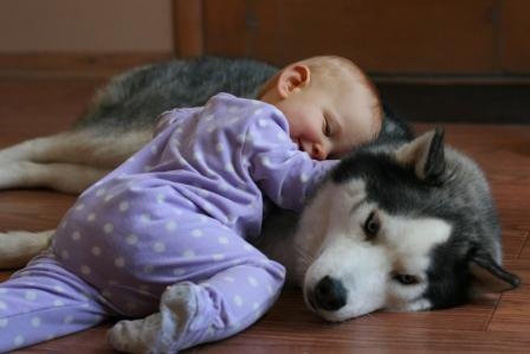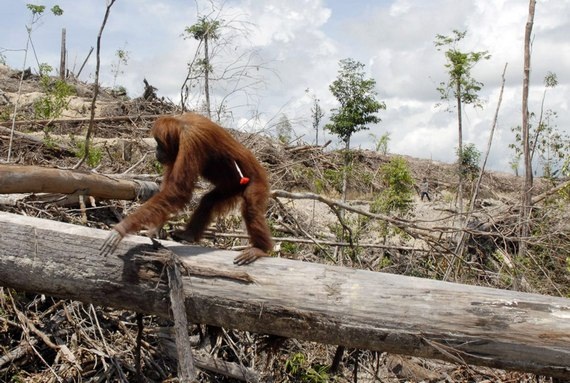The Blurred Line Between Domestic and Exotic Animals

Today's issue will focus on how we define the lines between domesticated and exotic animals, something that many people are confused of in regards to captive animals. Like how do we define a zoo tiger confined in its' enclosure, dependent on human care? The tiger is not strictly "wild", but at the same time, it would easily rip out your throat, so it's not tame. And what about the disappearing habitats where animals normally live in? Is this considered the natural habitat or must the animals adapt? We as humans know the old adage "home is where you make it". Does this apply to animals as well? This post will try to explore the intricate details of how we see animals under our care.

Most people see domesticated animals as "fully tame" animals that have been bred and raised by humans for profit, be that food, wool, companions, or some other use. Horses, dogs, cats, chickens, pigs, and even koi fish fall under that category. Exotic animals are generally considered those who live in the "wild" and are not under human control. It is important to note that all domesticated species have "wild" counterparts that they are either related to or descended from. Wolves are the ancestors of dogs, tigers and lions are the much larger counterparts to their house relatives, and even wild boars still populate much of Asia.

The lines though between domestication are definitely blurred to an extent. Even animal scientists disagree on the exact definitions of domesticated, although most agree that it involves being intertwined with humans until they could never be released back into the wild. This can be a little confusing when you factor in feral animals. Feral is an individual of a domesticated species that is not dependent of humans for care, most notable dogs and cats.

Domesticated is different from the word "tame" which means that the animals is no danger to humans, which is sort of misleading. Even dogs, "man's best friend" attack humans on a daily basis. And it gets a little bit more confusing as you dive into every animal species and their own individual case.

For example, Asian elephants have worked with humans for thousands of years in the logging business (more have moved into the tourist industry after bulldozers took their place). But the elephants of Thailand and Burma could hardly be considered tame as multiple people are crushed by the imposing animals. Furthermore, while a large number of Asian elephants are "domesticated" and trained from life, they do not pass on those traits to their offspring.

The list of individual cases go on. It is argued that cats were never truly domesticated. Historians have uncovered evidence that the ancient Egyptians made steps to domesticate the hyena, but never succeeded. Cheetahs were captured and trained to hunt alongside the ancient Emperors of Assyria. War elephants were used by the famous military leader Hannibal. Asian water buffalo exist in both domesticated and wild scenarios. Scientists still debate whether it is possible to domesticate koi which are officially under the domestication list. It's clear that there's a fine line between domestication and wild.

Zoo animals present another interesting case. As thousands of animals dependent on human care for their food and shelter, they cannot be classified as "wild" as they would die if placed in their natural habitat due to a lack of knowledge on how to take care of themselves. But then again, they are not tame or domesticated, the history of animals attacking their keepers or visitors are well-documented. The death of Carlos Sousa on December 25, 2007 by Siberian tiger Tatiana is one of the most famous, along with the recent death of killer whale trainer Dawn Brancheau by the recently-departed bull orca Tilikum. So zoo animals exist in another limbo where they remain too wild to live with humans (indeed, some zoo animals are set for reintroduction programs) and too tame to live in their natural habitat.

The common course of action when categorizing animals is captive or wild. But really, what is the wild? Most think of the wild as the savannas of Africa, the rain forests of South America, or the Arctic tundras. But the wild has been confined and squeezed into small pockets as humans continue to expand. Most of the world's lion population lives in game parks. It is estimated that a rhino is killed every six hours. The African elephant population has gone down 30% in the past three years. However controversial, the wild is gone. Even in Africa where it is common to think of lush rain forests and expansive savannas, most elephants, zebras, wildebeest, and lions live in game parks with borders drawn by humans.

Domesticated animals are a testament to man's will to dominate nature, there is no other way to describe it. Humans have bound species to help their own survival, for food, friendship, or fur. This is not necessarily bad, as long as the domesticated species are treated ethically. Domesticated animals present an interesting challenge for many as we dive into the next era where animal care has come into more scrutiny than ever before. The exotic animals under our care may receive the most attention, but we as humans also have a duty to also pay attention to the many domesticated animals under our care.
Author's Note: This is a vast subject of many controversies and I intend to write more about the plight of domesticated species. This was meant to be a very brief overview of the fine lines between domesticated and exotic species. It is clear to many that some methods in which we treat domesticated animals are no longer acceptable. Animal science is constantly evolving and shifting. This should hopefully be for the best.

Domesticated animals are a testament to man's will to dominate nature, there is no other way to describe it. Humans have bound species to help their own survival, for food, friendship, or fur. This is not necessarily bad, as long as the domesticated species are treated ethically. Domesticated animals present an interesting challenge for many as we dive into the next era where animal care has come into more scrutiny than ever before. The exotic animals under our care may receive the most attention, but we as humans also have a duty to also pay attention to the many domesticated animals under our care.
Author's Note: This is a vast subject of many controversies and I intend to write more about the plight of domesticated species. This was meant to be a very brief overview of the fine lines between domesticated and exotic species. It is clear to many that some methods in which we treat domesticated animals are no longer acceptable. Animal science is constantly evolving and shifting. This should hopefully be for the best.
No comments:
Post a Comment